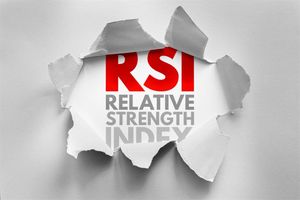Financial News
Solana ETFs with Staking: The New Frontier for Institutional Crypto Investment

The financial landscape is undergoing a significant transformation as institutional investors increasingly turn their attention to Solana Exchange-Traded Funds (ETFs) that incorporate liquid staking provisions. This innovative approach promises to revolutionize crypto investment by offering not only exposure to Solana's (SOL) price movements but also attractive yields generated through blockchain staking. This integration is poised to make Solana ETFs exceptionally more appealing to a broader institutional audience, addressing key demands for yield generation, enhanced capital efficiency, and regulated access to digital assets.
This evolving discussion is underpinned by concrete developments signaling a growing trend. Precedents are already being set, with Canada and Brazil having successfully launched Solana staking ETFs. In the U.S., the REX-Osprey Solana + Staking ETF (Cboe BZX: SSK) launched in July 2025 and quickly amassed over $212 million in assets under management (AUM) by September 2025. Further cementing this institutional push, a multitude of major asset managers, including Fidelity (NYSEARCA: FBTC), VanEck (NASDAQ: VANEK), Bitwise, 21Shares, Franklin Templeton (NYSE: BEN), Invesco (NYSE: IVZ)/Galaxy, and Grayscale, have filed applications or amended S-1 forms with the U.S. Securities and Exchange Commission (SEC) for spot Solana ETFs, many of which intend to incorporate staking functionality. These moves indicate a concerted effort to blend the innovative yield mechanisms of decentralized finance with the regulated accessibility of traditional financial instruments, thereby attracting substantial institutional capital into the Solana ecosystem.
The Yield Revolution: Why Staking in ETFs is a Game Changer
The recent advancements in allowing staking provisions within cryptocurrency ETFs, particularly those focused on Solana, mark a pivotal moment for institutional crypto investment. This convergence of regulatory clarity, technological innovation, and surging institutional demand for yield-generating digital assets is immensely significant because it addresses one of the primary hurdles for traditional finance players: the lack of predictable income streams from digital assets beyond mere price appreciation.
A significant event leading to this juncture was the July 2025 launch of the REX-Osprey Solana + Staking ETF (Cboe BZX: SSK) in the United States. This fund, structured as a C-corporation under the Investment Company Act of 1940, pioneered a mechanism to distribute staking income directly to shareholders, circumventing some of the typical regulatory challenges faced by products under the 1933 Act. Its rapid accumulation of over $212 million in AUM within two months unequivocally demonstrated strong investor appetite for yield-enhanced crypto exposure. Concurrently, a powerful coalition of asset managers including Fidelity (NYSEARCA: FBTC), VanEck (NASDAQ: VANEK), Bitwise, 21Shares, and Franklin Templeton (NYSE: BEN), have updated their S-1 filings to allow their proposed Solana ETFs to stake a portion of their holdings. Even Grayscale, while initially filing to convert its existing Solana Trust into an ETF without staking, has indicated the possibility of including staking in the future, subject to regulatory approval. In September 2025, Fidelity's (NYSEARCA: FBTC) Solana ETF (FSOL) and Canary Capital's proposed products appeared on the Depository Trust & Clearing Corporation (DTCC) list, a technical step towards market infrastructure setup, further signaling the imminence of these products.
The appeal for institutions is multi-faceted. Staking Solana (SOL) typically offers annual yields ranging from 5.5% to 7.5%, providing a compelling return on investment that goes beyond mere capital gains. This yield can offset the fund's expense ratios, potentially leading to better net returns for investors and a more attractive value proposition compared to traditional asset classes. Furthermore, the integration of liquid staking solutions, often involving partnerships with protocols like Marinade and Jito, is crucial. Liquid staking tokens (LSTs) solve the problem of illiquidity inherent in traditional staking by allowing investors to earn rewards while their underlying assets remain tradable or usable in other decentralized finance (DeFi) protocols. For ETFs, this means eliminating unbonding delays, enabling seamless daily creation and redemption of shares, while simultaneously accruing staking rewards. This blend of liquidity and yield is a powerful draw, bridging the gap between DeFi innovation and traditional finance accessibility within a regulated framework. Initial market reactions have been overwhelmingly positive, with significant institutional capital flowing into these products and analysts largely optimistic about further approvals, predicting a 90-99% probability of Solana ETF approval by year-end 2025.
Who Stands to Gain and Who Might Falter in the Staking-ETF Era
The emergence of staking-enabled Solana ETFs is poised to create a distinct cohort of winners and those facing significant competitive pressures across the financial landscape. At the forefront of the beneficiaries are the asset management firms pioneering these innovative products. Companies like REX-Osprey, an early mover with its U.S. staking ETF, and major players like Fidelity (NYSEARCA: FBTC), VanEck (NASDAQ: VANEK), Bitwise, 21Shares, Franklin Templeton (NYSE: BEN), Invesco (NYSE: IVZ)/Galaxy, and Grayscale, are set to capture substantial assets under management (AUM) and generate significant fee revenue. The ability to offer a regulated product that provides both capital appreciation and staking yield presents a powerful draw for institutional investors, effectively blurring the lines between traditional finance and the crypto market.
Beyond the ETF issuers, specialized staking service providers and blockchain infrastructure companies are primed for substantial growth. Firms such as Coinbase (NASDAQ: COIN) and Gemini Trust Company, already established as major cryptocurrency exchanges and custodians, are well-positioned to offer institutional-grade custodial and staking solutions for these ETFs. Anchorage Digital Bank, as a federally regulated bank, is noted for its ability to both custody and stake digital assets, making it a key partner for staking-enabled funds. Decentralized liquid staking protocols like Marinade and Jito are also set to experience massive inflows, as ETF issuers partner with them to leverage their liquidity-preserving staking mechanisms. These protocols, transforming into core financial architecture, could see their total value locked (TVL) increase by orders of magnitude. The heightened demand for secure, compliant, and robust staking infrastructure will drive revenue for these providers, solidifying their critical position within the expanding Solana ecosystem.
A third significant category of winners includes public companies that have strategically accumulated Solana (SOL) on their balance sheets, often referred to as Digital Asset Treasury Companies (DATCOs). Companies such as SOL Strategies (NASDAQ: HODL) and Forward Industries (NASDAQ: FORD) are demonstrating institutional confidence by actively accumulating and staking SOL. Forward Industries (NASDAQ: FORD), for instance, purchased 6.8 million SOL for nearly $1.6 billion, all of which has been staked. These firms benefit from a "dual-income" stream of potential price appreciation driven by ETF approval and the ongoing staking yields, significantly enhancing their treasury strategies.
Conversely, certain entities may face headwinds or increased competition. While major centralized exchanges like Coinbase (NASDAQ: COIN) offer staking, the rise of regulated, staking-enabled Solana ETFs provides an alternative entry point for institutional and sophisticated retail investors, potentially intensifying competition for direct staking market share. Traditional financial institutions that are slow to embrace digital assets or to offer crypto-related services risk missing out on new revenue streams and client demand, potentially losing market share to more forward-thinking competitors. Furthermore, the institutional demand driven by ETFs will likely favor large, secure, and compliant staking providers, putting smaller or less robust staking services at a disadvantage and potentially leading to consolidation in the industry. Finally, other Layer-1 blockchains, while not direct "losers," might experience a relative shift in investor interest and capital allocation towards Solana if they fail to secure similar ETF approvals or institutional adoption pathways, placing pressure on them to innovate and compete for institutional engagement.
Industry Transformation: A Paradigm Shift for Digital Assets
The advent of staking-enabled Solana ETFs represents a monumental shift, signaling a deeper integration of cryptocurrency into the traditional financial markets and fundamentally altering how digital assets are perceived. This move transcends mere price exposure, establishing cryptocurrencies like Solana not just as speculative instruments but as productive, yield-generating financial assets. This evolution addresses a critical demand from institutional investors seeking income-generating opportunities akin to traditional bonds or dividend-paying stocks, thereby catalyzing the broader institutionalization of crypto. It marks a significant step towards bridging the gap between traditional finance (TradFi) and the innovative world of Web3, offering regulated, accessible, and familiar investment vehicles for a wide array of investors previously hesitant to engage directly with digital assets.
The ripple effects of this development are profound, impacting both competitors and partners across the digital asset ecosystem. Other smart contract platforms, particularly those utilizing a Proof-of-Stake (PoS) consensus mechanism, will face intensified pressure to achieve similar institutional acceptance and regulatory compliance, potentially accelerating their own efforts to launch yield-bearing ETFs. This could spur innovation in regulatory adherence, decentralization, and network reliability across the entire blockchain landscape. While Ethereum (ETH) has its own spot ETFs, a successful Solana staking ETF intensifies competition for institutional capital, especially given Solana’s advantages in transaction speed and lower fees, alongside potentially more attractive staking yields. Conversely, partners such as institutional custodians and specialized validator operators stand to benefit immensely. Firms like Coinbase Custody (NASDAQ: COIN), BitGo, and Gemini Trust Company, alongside validator service providers, will see new revenue streams and increased demand for their expertise in managing staked assets securely and compliantly. This demand will also drive further innovation in liquid staking solutions and compliant staking infrastructure.
From a regulatory standpoint, the landscape has seen crucial, albeit cautious, evolution. The U.S. Securities and Exchange Commission (SEC) has historically expressed concerns that crypto ETFs offering staking rewards might classify as unregistered securities. However, the REX-Osprey Solana + Staking ETF (Cboe BZX: SSK) circumvented some of these challenges by adopting a c-corporation structure under the Investment Company Act of 1940. Furthermore, the SEC is reportedly working on a generic crypto ETF framework, which could streamline future approvals. Despite delays on numerous Solana ETF applications, analysts are largely optimistic, with prediction markets indicating a 90-99% probability of Solana ETF approval by year-end 2025. The approval of Bitcoin and Ethereum spot ETFs has created a powerful precedent, making it increasingly difficult for the SEC to deny similar products for other established cryptocurrencies like Solana. Internationally, Canada has pioneered the introduction of both spot and staking Solana ETFs, and Brazil approved its first Solana ETF in August 2025, exerting pressure on the SEC to ensure U.S. investors have access to these innovative financial products.
Historically, the journey of staking-enabled Solana ETFs draws clear parallels and distinctions from earlier crypto ETF approvals. The launch of U.S. spot Bitcoin ETFs in 2024 was a landmark event, attracting billions in institutional capital and validating Bitcoin (BTC) as an investable asset class. However, Bitcoin (BTC), operating on a Proof-of-Work (PoW) mechanism, does not inherently offer a yield component. Following this, Ethereum (ETH) spot ETFs were approved in May 2024, initially without staking, but asset managers like BlackRock (NYSE: BLK) and 21Shares have since filed proposals to add staking to their Ethereum ETFs. Staking-enabled Solana ETFs, exemplified by the REX-Osprey Solana + Staking ETF (Cboe BZX: SSK), represent the next evolutionary step, directly incorporating yield generation through Solana's Proof-of-Stake mechanism. This offers a dual return model of capital gains plus yield, significantly broadening the appeal of crypto ETFs to income-focused traditional investors. The broader Solana ecosystem and decentralized finance (DeFi) stand to gain substantially from these developments. Increased capital inflows could lead to significant price appreciation for Solana, while the aggregation of staked SOL through ETFs can enhance network security and decentralization.
The Road Ahead: Navigating the Future of Staking-Enabled ETFs
The journey for staking-enabled Solana ETFs, while already seeing significant milestones with products like the REX-Osprey Solana + Staking ETF (Cboe BZX: SSK) in the U.S. and similar offerings in Canada, is still unfolding. In the short term, market reactions to widespread approvals could trigger heightened volatility for Solana (SOL). While initial launches have drawn substantial inflows, profit-taking and token unlocks can also lead to temporary price pullbacks. Nevertheless, the appeal of yield-generating crypto assets provides a new impetus for institutional capital, driven by the desire for returns beyond mere price appreciation. Regulatory scrutiny from the U.S. Securities and Exchange Commission (SEC) will remain a focal point, as it continues to clarify guidelines for staking mechanisms and their classification. Concerns about staking yields and potential validator concentration will also necessitate careful monitoring to ensure network decentralization.
Looking further ahead, the long-term possibilities are transformative. A sustained, regulated channel for institutional capital could propel Solana into unprecedented price discovery, with some experts forecasting SOL to reach $180, $250-$300, or even $750+ in an extended bull run. This sustained backing would spur further investment in Solana's infrastructure, enhancing network security, scalability, and overall reliability, cementing its role as a foundational layer for high-frequency decentralized finance (DeFi) applications. The success of staking-enabled Solana ETFs is also expected to intensify competition among asset managers, fostering a "race to the bottom" in terms of fees and a surge in innovative product offerings, potentially extending to other Proof-of-Stake networks like Cardano or Polkadot. Moreover, this trend is likely to accelerate regulatory evolution for the broader crypto industry, fostering a more stable and predictable environment, and crucially, leading to a deeper convergence of centralized finance (CeFi) and DeFi, expanding access and reducing risk for a wider investor base.
Strategic pivots and adaptations will be essential for all market participants. Investors, both retail and institutional, will need to embrace new investment strategies that incorporate yield-generating crypto assets within a regulated framework, while carefully assessing the unique risks associated with market volatility, potential validator penalties (slashing), and smart contract vulnerabilities inherent in liquid staking. Solana validators and delegators will face increased competition and a demand for greater professionalization, focusing on uptime, security, and attractive fee structures, while actively working to promote a broader validator set to enhance decentralization. ETF providers will be required to continuously innovate, offering competitive fees and enhanced yield optimization strategies, all while navigating complex regulatory compliance and securing partnerships with trusted staking service providers and qualified custodians such as Coinbase Custody (NASDAQ: COIN), BitGo, and Gemini Trust Company. Traditional financial institutions will increasingly integrate crypto-backed products, including staking-enabled ETFs, into their offerings, creating new revenue streams but also necessitating the adaptation of existing risk management and compliance frameworks to accommodate the unique characteristics of digital assets.
The Dawn of a New Crypto Investment Paradigm: A Concluding Outlook
The advent of staking-enabled Solana ETFs marks a truly pivotal and transformative moment in the institutional adoption of digital assets. The key takeaway from this emerging trend is the dual value proposition these products offer: providing investors not only with exposure to Solana (SOL) price movements but also with the attractive, inherent yield generated through staking. This innovation directly addresses long-standing institutional pain points, including the scarcity of compelling yields in traditional markets, liquidity constraints often associated with direct staking, and the complexities of managing crypto custody and staking operations. By offering access within regulated frameworks and leveraging institutional-grade custodians, these ETFs significantly lower the barrier to entry for a broader investor base, enhancing security and ensuring compliance. The U.S. Securities and Exchange Commission's (SEC) evolving clarity has been instrumental in emboldening asset managers and accelerating this paradigm shift. However, investors must remain cognizant of inherent risks such as cryptocurrency market volatility, potential losses from validator penalties (slashing), and the nascent nature of these funds which still require extensive track records.
Looking ahead, the market is poised for significant capital inflows and maturation. Industry analysts project substantial investments, with some estimating $3-6 billion flowing into staking-enabled ETFs over the next 6-12 months. The early success of products like the REX-Osprey Solana + Staking ETF (Cboe BZX: SSK), which rapidly surpassed $200 million in assets under management (AUM), unequivocally demonstrates strong pent-up demand. The superior staking yield offered by Solana, typically ranging between 5.5-7.5% annually after fees—often exceeding those of Ethereum (ETH)-based ETFs and traditional equity ETFs—is a major draw for institutions seeking income generation. Beyond investment appeal, these ETFs contribute positively to the Solana network by aggregating staked SOL across high-performance validators, thereby bolstering network security and decentralization. This institutionalization is expected to enhance SOL's liquidity and market depth, contributing to reduced long-term volatility and cementing Solana's growing significance in the digital asset landscape.
The lasting impact of staking-enabled Solana ETFs cannot be overstated; they represent a "new era" for crypto investing. These products are redefining the value proposition of crypto ETFs by seamlessly combining price appreciation potential with active income streams, effectively normalizing digital assets within the traditional Wall Street lexicon. This development is crucial for validating the Proof-of-Stake consensus mechanism in the eyes of traditional finance and regulators, potentially paving the way for similar yield-generating ETFs across other altcoins. Ultimately, these innovative financial instruments democratize access to Solana's growth story and its staking rewards, offering a regulated, accessible pathway that could catalyze mass adoption and unlock significant capital for the entire cryptocurrency ecosystem.
For investors navigating these exciting developments, a well-informed strategy is paramount in the coming months. Firstly, meticulously evaluate different Solana ETF structures, comparing fees, underlying staking mechanisms, and distribution frequencies. Secondly, actively monitor regulatory developments, particularly upcoming SEC decisions for other spot Solana ETF filings, with final verdicts anticipated in October and November 2025 for several major asset managers, as these can serve as significant market catalysts. Thirdly, comprehend the inherent risks, including market volatility, staking-specific risks like slashing, and the potential for smart contract vulnerabilities in liquid staking, even as the ETF wrapper aims to mitigate direct operational exposure. Fourthly, consult with a qualified tax advisor to understand the tax implications of staking rewards. Additionally, keep a close watch on Solana's underlying ecosystem growth—including Solana Pay, DeFi activity, and NFT engagement—as these underpin the long-term investment thesis. From a technical perspective, monitor key price levels for SOL, with analysts suggesting potential rallies to $180, $250-$300, or even $750+ in highly bullish scenarios. Finally, maintain a long-term investment perspective; these ETFs are generally designed for sustained growth and yield, and analysts suggest that any short-term dips resulting from initial regulatory hurdles could present buying opportunities. The journey ahead for staking-enabled Solana ETFs promises to be a dynamic one, offering both significant opportunities and challenges that will continue to shape the future of finance.
More News
View More



Recent Quotes
View More
Quotes delayed at least 20 minutes.
By accessing this page, you agree to the Privacy Policy and Terms Of Service.



